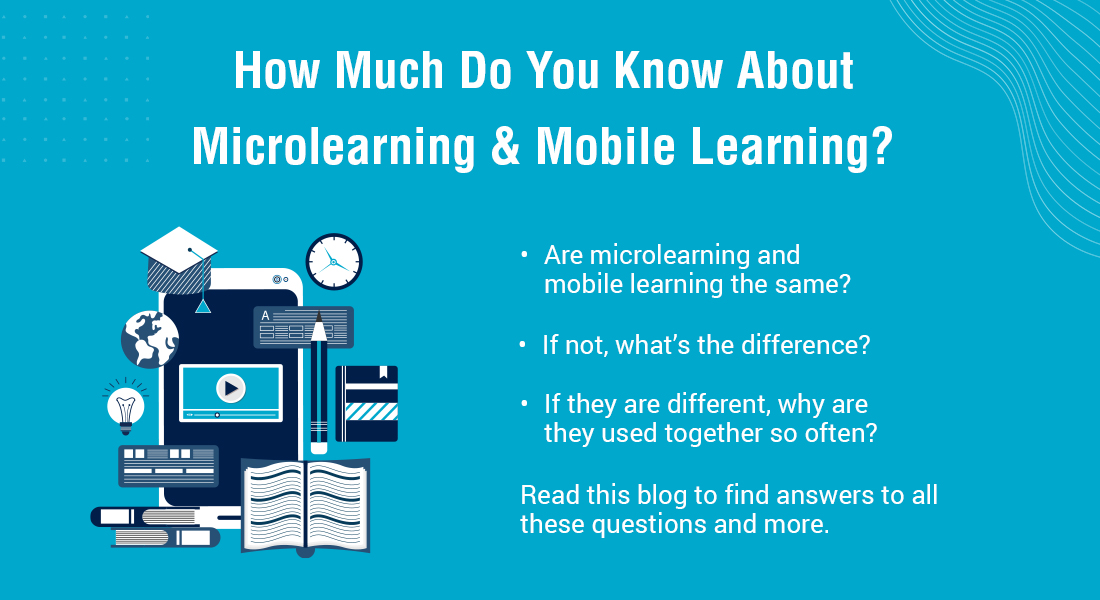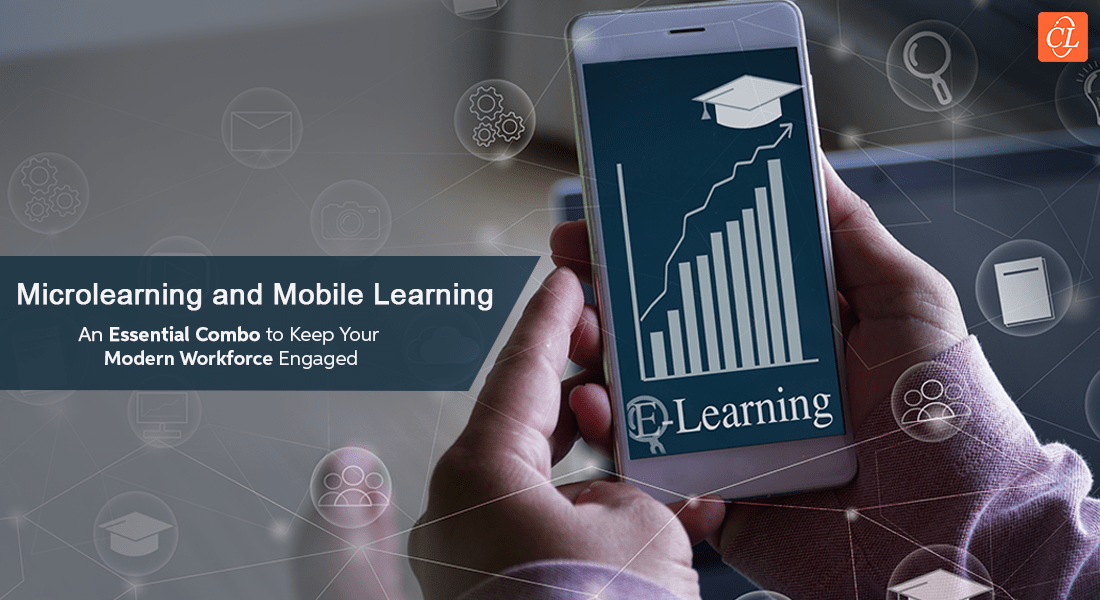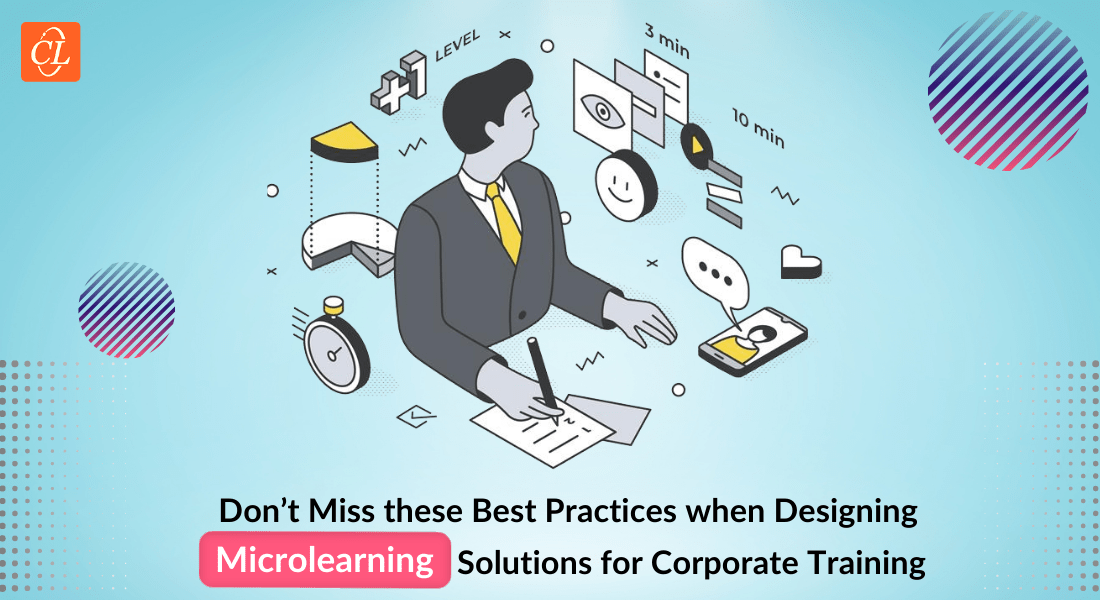Microlearning & Mobile Learning: How Far, How Near

Okay…this is partly our fault. I mean we, corporate training professionals as a collective, are responsible for this confusion between microlearning and mobile learning. We use this combination so often, both in conversation and practice, so much so that we give the impression that they are the same thing.
Microlearning & Mobile Learning At a Glimpse
- Microlearning makes learning content easy to understand and remember
- Mobile learning makes learning content accessible on mobile devices
- Microlearning and mobile learning when used together complement each other to create a learning solution that is engaging, flexible, and accessible.
But in truth, microlearning and mobile learning are very different training approaches. Microlearning is all about providing focused learning so that learners get the exact information they are looking for, without any ‘extras’, and without taking too much of their time. On the other hand, mobile learning is all about making learning available for learners on their mobile devices so that they can access information wherever they are, irrespective of their location.
→ Learn more about microlearning and how it can be implemented in your corporate training program.
Now that we have made the distinction clear, let’s look at what each training approach is all about, how they differ, and why are they used together so often.
Drawing the Line Between Microlearning & Mobile Learning
Microlearning: The ‘Bite-sized’ Training Strategy
As the tagline suggests, microlearning is a training approach that ensures learners get only as much information as they can bite and digest in one go. While a lot is talked about how microlearning is designed to cut down on the duration of the course, it is not entirely accurate. The primary goal is to provide just the right amount of information about one specific topic without overwhelming the learner. That is why each microlearning course focuses on a single learning objective. The reduced course duration is a bonus.
- Microlearning can be delivered through mobile devices or can be a desktop-only solution.
- It can be standalone, part of a curriculum (online or blended), or used as performance support.
- It can be delivered in a variety of formats – videos, audio podcasts, infographics, animations, etc.
Mobile Learning: Anytime, Anywhere Access to Training
The concept of mobile learning is pretty self-explanatory – making training available on mobile devices so that learners can access it no matter when, no matter where. Mobile learning in corporate L&D has evolved in the past decade alone from being a luxury trend to a necessity. And that is because of:
- The mobile revolution and advancements in communication and IT
- The growing number of global, remote, off-site, and work from home workforces
- Social media and its impact on how we consume information, share ideas, work, and learn
- The entry of millennials and Gen Z into the workforce
But can we call it mobile learning if eLearning is simply made available on mobile devices? No, mobile learning involves much more.
- The courses should be responsive for changing screen sizes and orientations of mobile devices.
- On-screen content should be designed for the small screen, be more visual, should not be text-heavy.
- Functions should be designed based on mobile screen activity – ‘touch’ instead of ‘click’, ‘scroll down’ instead of ‘next slide’.
- Interactivities should also be mobile compatible – for example, drag and drop activities don’t work well on the mobile.
Corporate L&D was initially slow to adopt the mobile learning culture and had some doubts and apprehensions that still ring true today. But it is also pretty obvious that we can’t imagine life as we know it without mobile devices any more than we can reverse the ticking clock. And getting information at your fingertips at the time of need doesn’t just make life easier; it also makes our work more efficient.
Microlearning vs. Mobile Learning
Now that we have an overview of what each training approach entails, let’s see how they are different from one another.
| Microlearning | Mobile Learning |
| 1. A learning design approach based on the instructional method | 1. A learning design approach based on technology |
| 2. Focuses on one learning objective per course | 2. No hard and fast rule on number of learning objectives per course |
| 3. Makes learning more engaging, effective, comprehensive, and retentive | 3. Makes learning convenient, flexible, and accessible |
| 4. Can be delivered through desktops or mobile devices | 4. Designed specifically for mobile devices |
| 5. Course duration is 10-15 minutes | 5. No hard and fast rule on course duration |
Why are Microlearning and Mobile Learning Used Together?
Think about it, microlearning is an attempt to provide learners just-in-time learning that is short and on-point. But it can only be useful if learners are able to access it when they need it. And there is nothing that says that they will only need help (information) when they are conveniently located near their workstations.
On the other hand, mobile learning makes learning accessible at the point of need. But nobody will want to take an hour-long course on a small mobile screen in a state of urgency or emergency. They will need instant information.
This is why microlearning and mobile learning are used so often in combination. Microlearning with its ‘bite-sized learning nuggets’ and mobile learning with its ‘anytime, anywhere information’ are a match made in heaven, tailor-made for each other.
End Note
Can you now see how microlearning and mobile learning are different from each other? And how they can be used together to provide an optimal learning solution? That is why, microlearning is almost exclusively used in mobile-first learning solutions. If you too are interested in launching a mobile learning strategy, here is an eBook that will come in handy.





